Abstract
In this study of advertisements appearing in medical periodicals and by direct mail advertising to general practitioners, Dr. Stimson, a sociologist, concludes that from what is intended to provide therapeutic information hardly any therapeutic information is provided. He reminds the reader of the safeguards which surround all drug advertising by law and by the code of practice of the Association of the British Pharmaceutical Industry but these safeguards do not appear to control real or potential sins of omission. Frequently in these advertisements the literature relating to the drug is quoted but Dr. Stimson found that it was difficult to trace all the papers quoted in different types of medical library. (Some references quoted were to unpublished papers but surely the blame should be shared in this situation?) Dr. Stimson also gives a vivid and fascinating glimpse of what he calls the 'images and stereotypes' of the patients who, it is claimed, would benefit from the drug being advertised. Certainly most general practitioners must be aware that when they prescribe that image is displaced by an individual but the portrait gallery is indeed depressing. However, to balance these advertisements drug companies issue data sheets which must be more informative than advertisements and conform to regulations in their format. Unfortunately data sheets are only issued every 15 months whereas the 'average general practitioner is potentially exposed to 1,300 advertisements every month'. In other words, the data sheet and not the advertisement should be the guideline but it arrives too infrequently to offset the lack of therapeutic information contained in advertisements.
Full text
PDF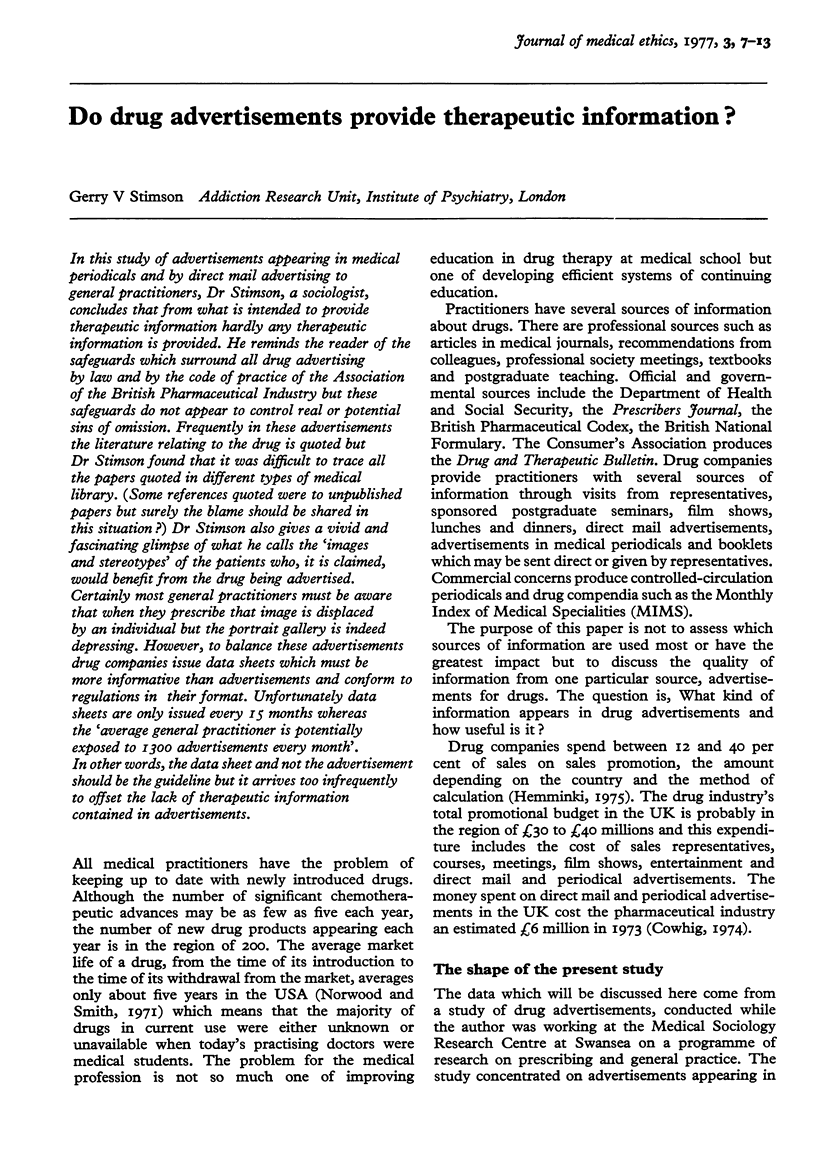
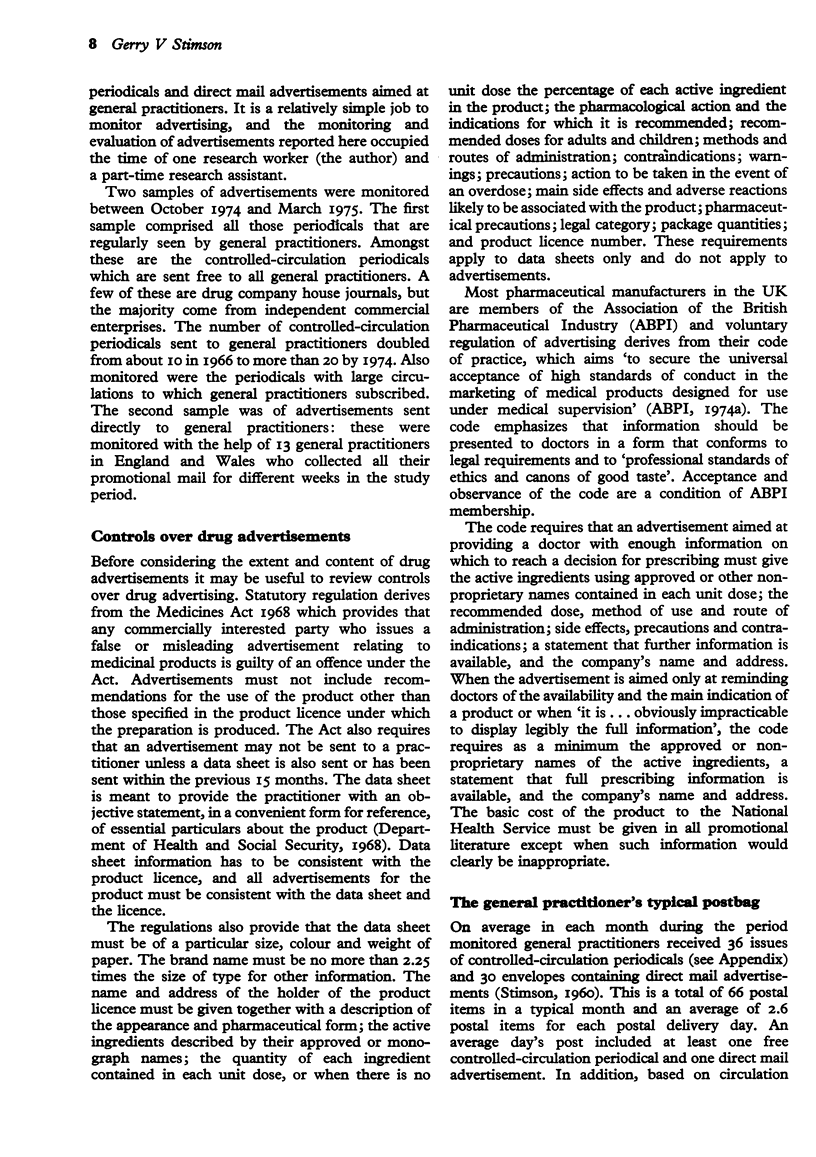
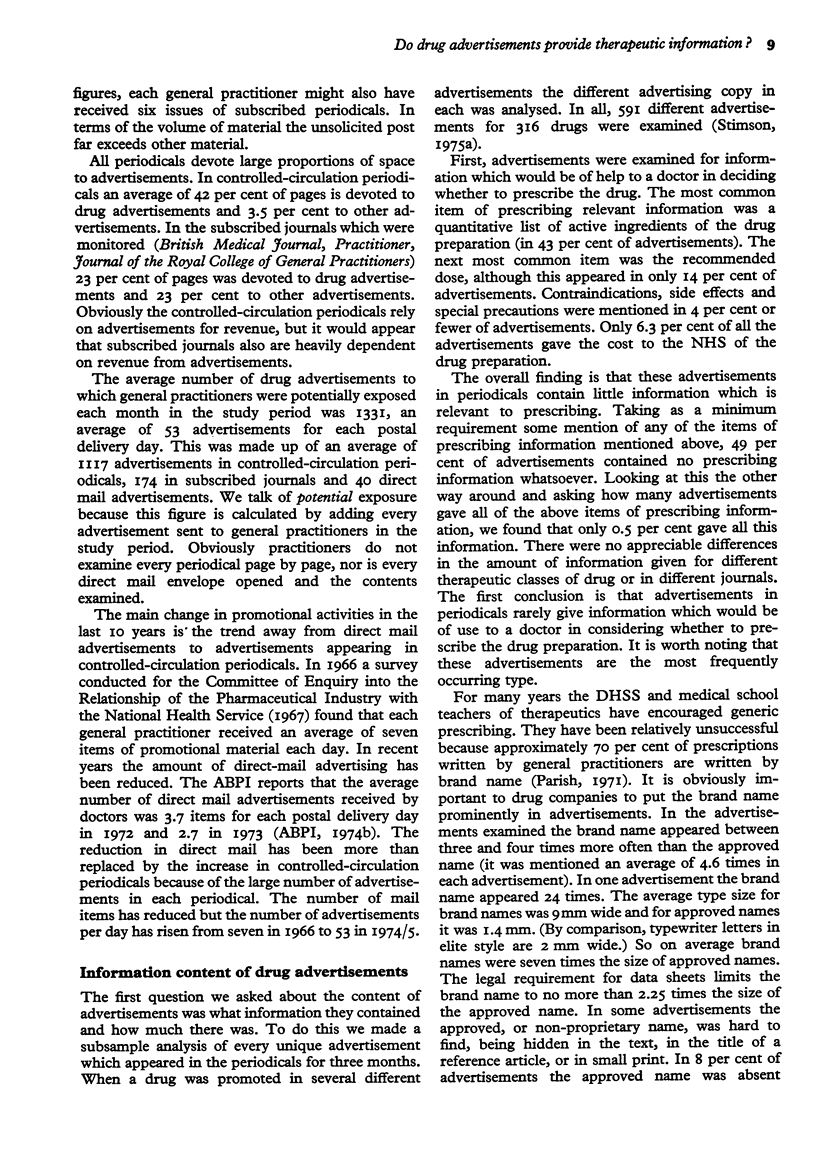
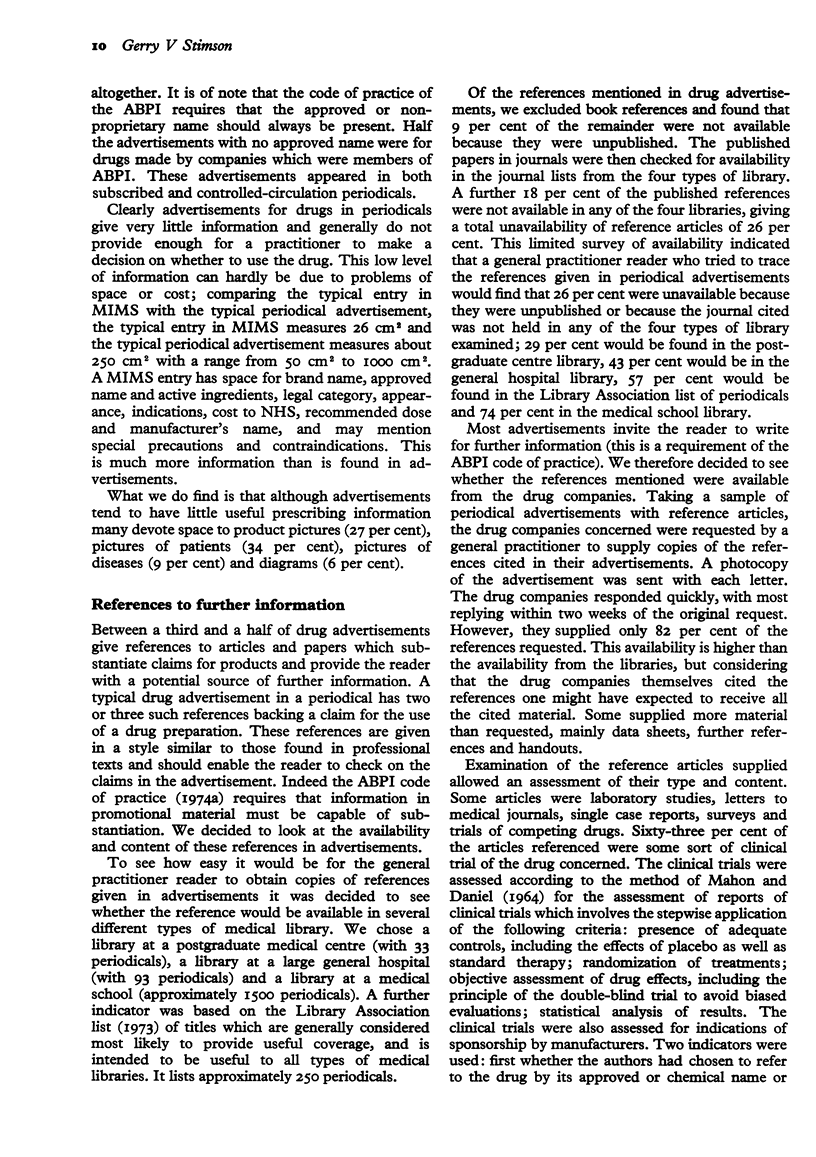
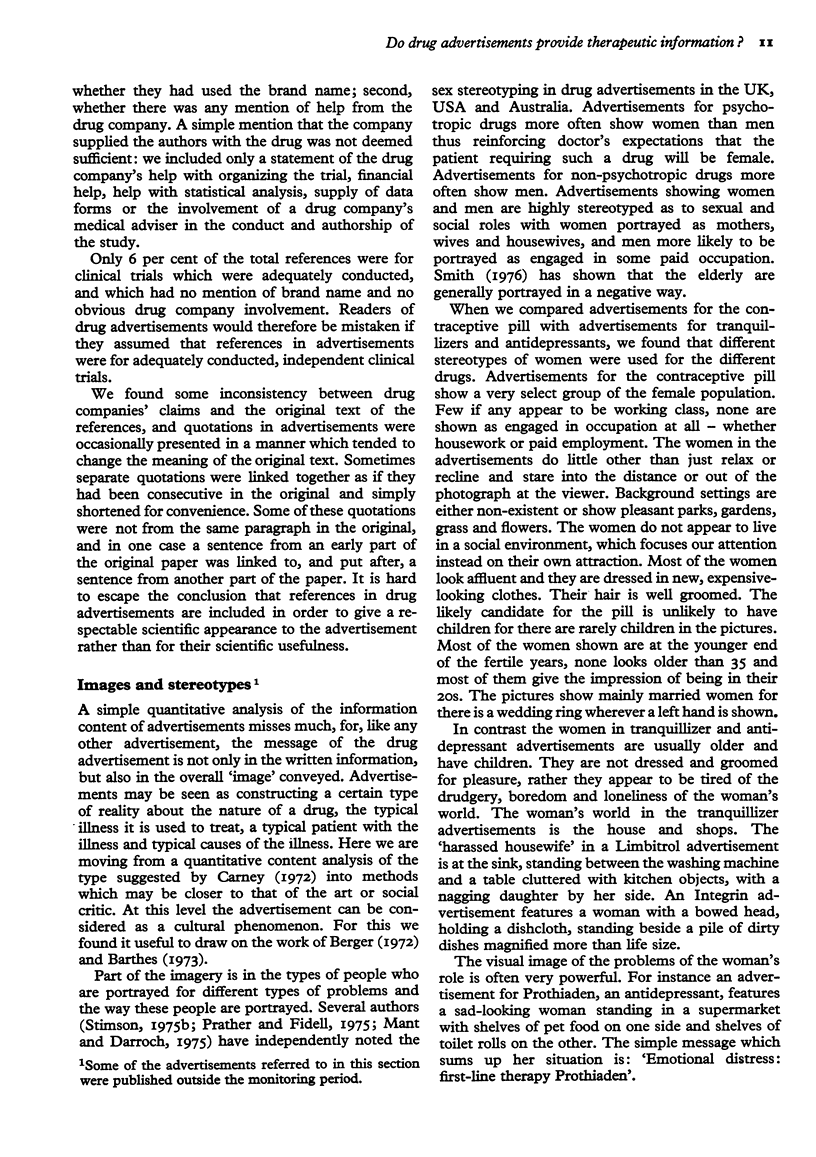
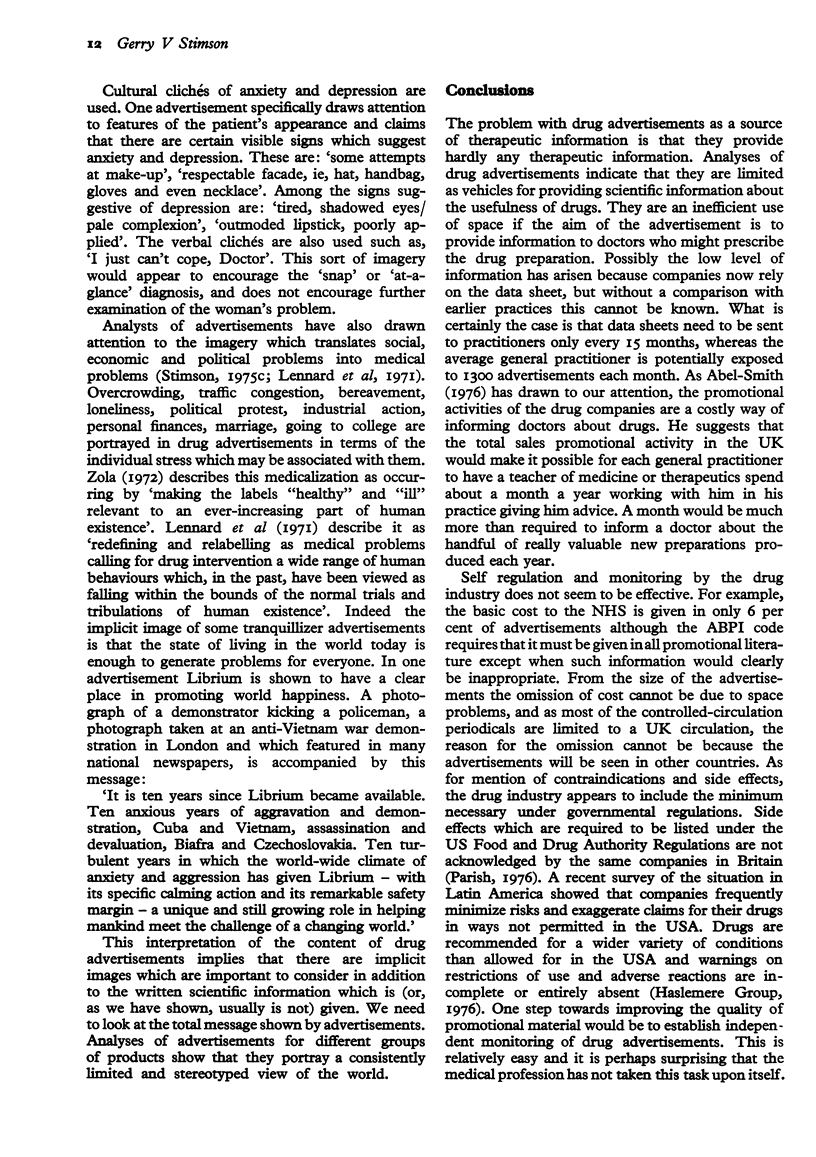
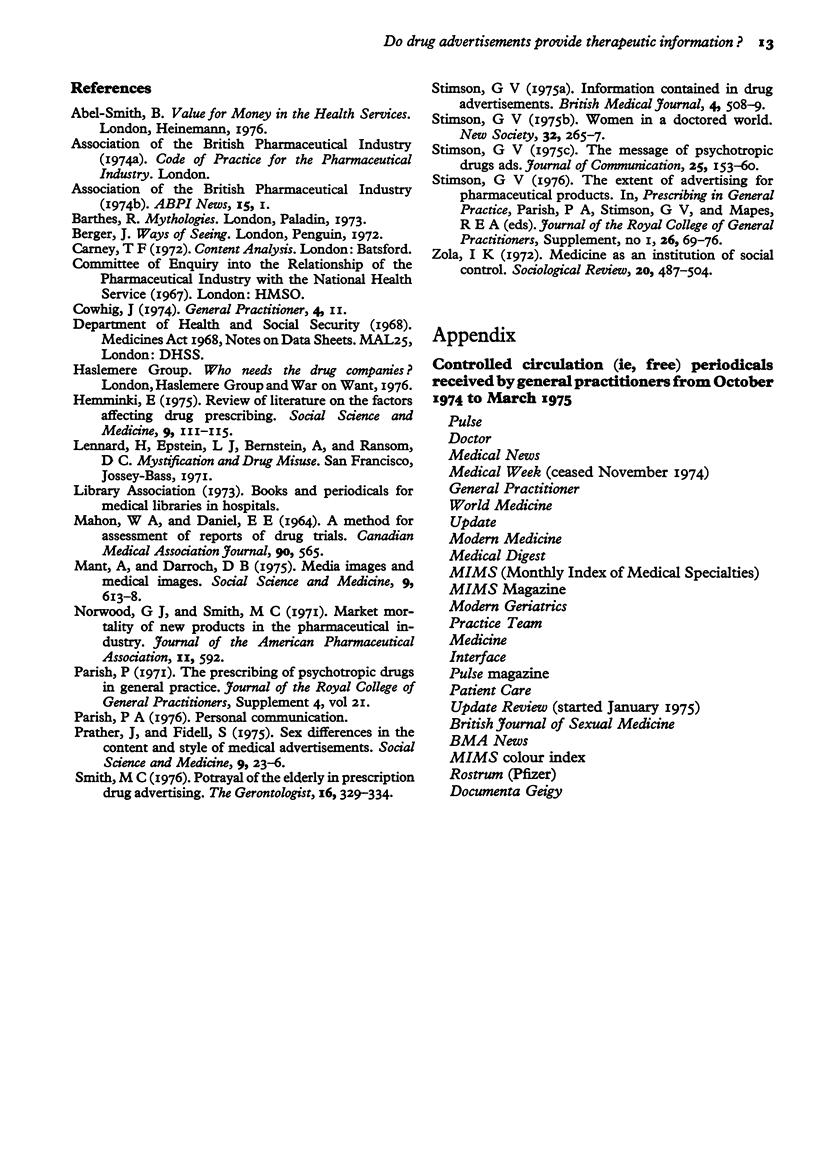
Selected References
These references are in PubMed. This may not be the complete list of references from this article.
- Smith M. C. Portrayal of the elderly in prescription drug advertising. A pilot study. Gerontologist. 1976 Aug;16(4):329–334. doi: 10.1093/geront/16.4.329. [DOI] [PubMed] [Google Scholar]
- Stimson G. V. The message of psychotropic drug ads. J Commun. 1975 Summer;25(3):153–160. doi: 10.1111/j.1460-2466.1975.tb00618.x. [DOI] [PubMed] [Google Scholar]
- Zola I. K. Medicine as an institution of social control. Sociol Rev. 1972 Nov;20(4):487–504. doi: 10.1111/j.1467-954x.1972.tb00220.x. [DOI] [PubMed] [Google Scholar]


